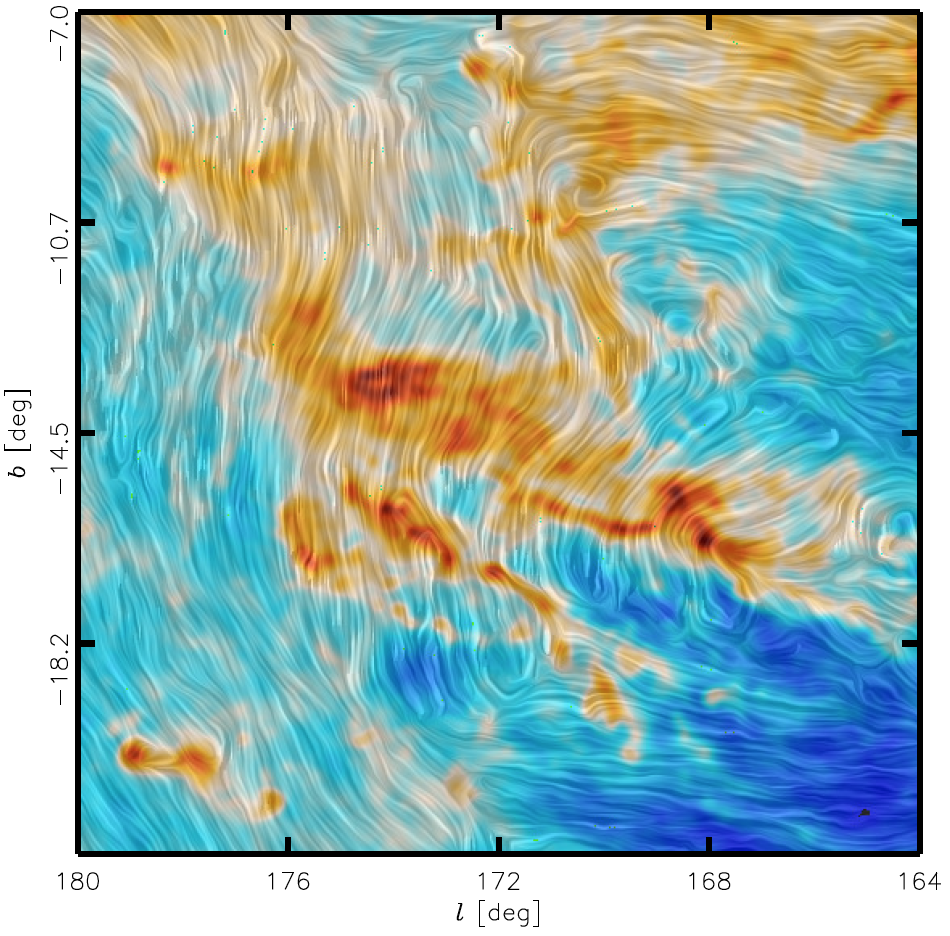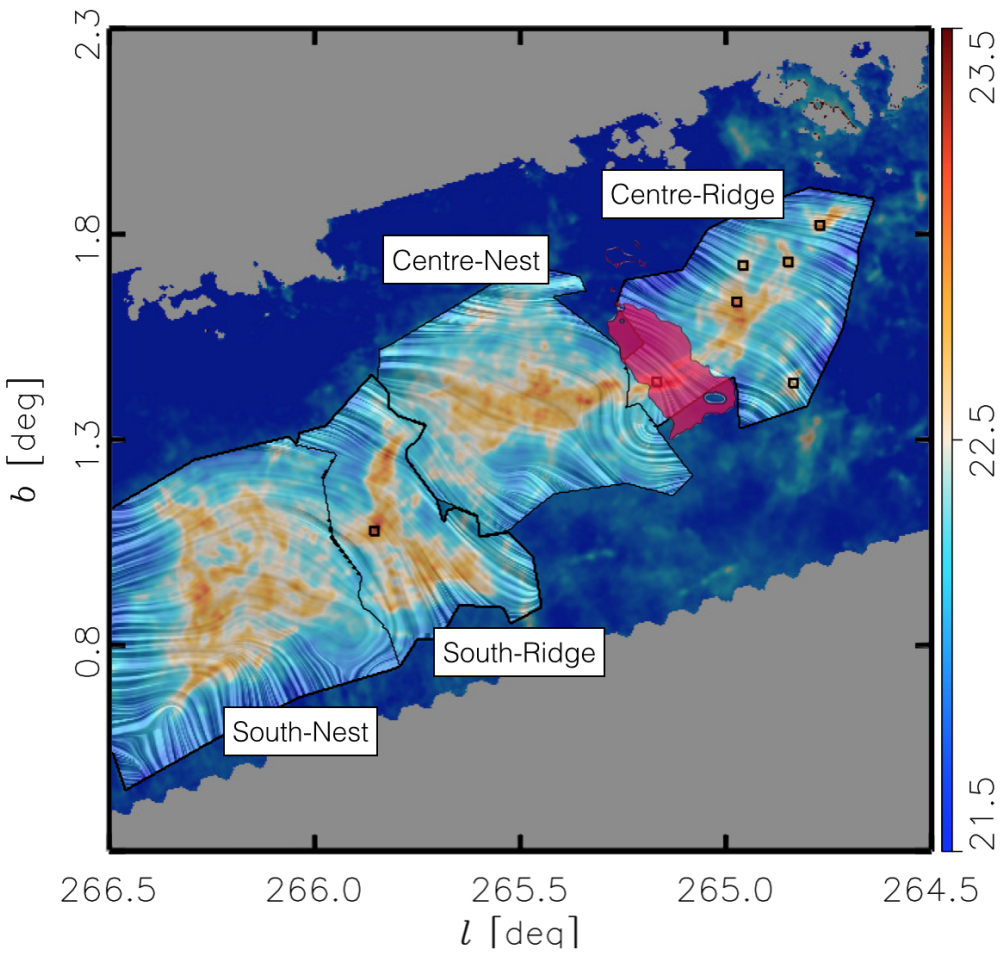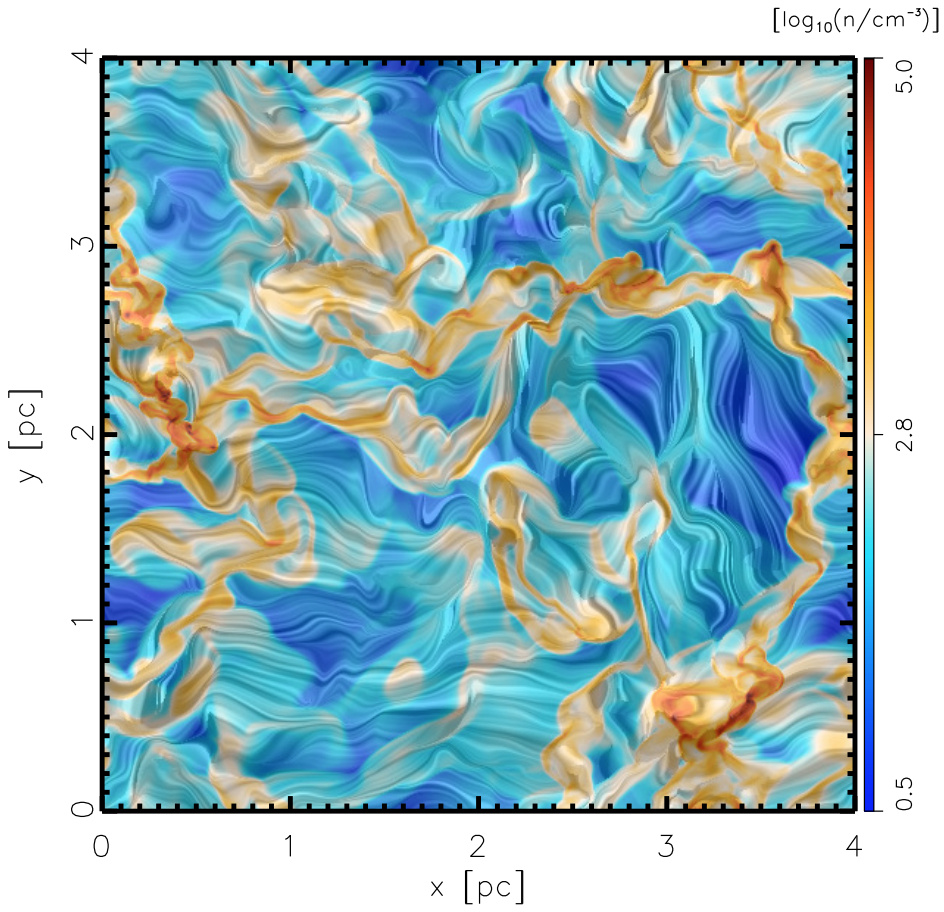I am a postdoctoral fellow at the Department of Planet and Star Formation in the Max Planck Institute for Astronomy.
I study the role of the magnetic field in the formation of structure in the interstellar medium (ISM), from molecular clouds to filaments and prestellar cores.
My work is right at the border between theory and observations.
I use simulations of magnetohydrodynamic (MHD) turbulence to characterize statistical tools that provide a link between the observations and the physical processes that structure the ISM.
I study the polarization of the thermal emission by dust, which contains information about the magnetic field in the intestellar medium (ISM), using the observations by Planck-HIFI and BLASTpol.
Currently, I am also working with the observations obtained in The HI/OH/Recombination line survey of the inner Milky Way (THOR).
I did my PhD at the University of Toronto, where I worked in the Balloon-borne Astrophysics group.
I participated in the Antarctic campaigns and the data reduction of BLASTpol.
I also designed and assembled the carbon fibre gondola for Spider.
CV
Publications
Observations of the interstellar magnetic field
Planck
ESA's Planck satellite has produced the first all-sky map of the polarized emission from dust at submm wavelengths.
Compared with earlier ground-based and balloon-borne observations this survey is an immense step forward in sensitivity, coverage,
and statistics.
|
Using the Planck observations within ten nearby (d < 450 pc) molecular clouds, we evaluate statistically the relative orientation between the magnetic field projected on the plane of sky, inferred from the polarized thermal emission of Galactic dust observed by Planck at 353 GHz, and the gas column density structures, quantified by the gradient of the column density.
Planck XXXV, 2016. (corresponding author J.D. Soler)
Other publications on the interstellar magnetic field as revealed by Planck:
|

|
Magnetic field and column density measured by Planck towards the Taurus molecular cloud.
|
BLASTPol
The Balloon-borne Large Aperture Submillimeter Telescope for Polarimetry (BLAST-Pol) is a suborbital mapping experiment designed to study the role played by magnetic fields in the star formation process.
BLAST-Pol is the reconstructed BLAST telescope, with the addition of linear polarization capability. Using a 1.8 m Cassegrain telescope, BLAST-Pol images the sky onto a focal plane that consists of 280 bolometric detectors in three arrays, observing simultaneously at 250, 350, and 500 microns.

Magnetic field and column density measured by BLASTPol and Herschel towards the Vela C molecular complex.
|
We statistically evaluated the relative orientation between gas column density structures, inferred from Herschel submillimetre observations, and the magnetic field projected on the plane of sky, inferred from polarized thermal emission of Galactic dust observed by BLASTPol towards the Vela C molecular complex.
Soler et al. A&A, 2017.
Other publications by the BLASTPol collaboration:
|
Fissel, et al. ApJ, 2016. Systematic Dependence of Polarization Fraction on Column Density and Local Polarization-Angle Dispersion.
|
|
Gandilo, et al. ApJ, 2016. Submillimeter Polarization Spectrum in the Vela C Molecular Cloud.
|
|
Santos el al. ApJ, 2017. Comparing Submillimeter Polarized Emission with Near-infrared Polarization of Background Stars for the Vela C Molecular Cloud.
|
|
The magnetic field and the formation of structure in the ISM
What is the imprint of the magnetization in the ISM structure?
We describe a morphological imprint of magnetization found when considering the relative orientation of the magnetic field direction with respect to the density structures in simulated turbulent molecular clouds.
This imprint was found using the Histogram of Relative Orientations (HRO): a new technique that utilizes the gradient to characterize the directionality of density and column density structures on multiple scales.
We present results of the HRO analysis in three models of molecular clouds in which the initial magnetic field strength is varied, but an identical initial turbulent velocity field is introduced, which subsequently decays.
Soler, Hennebelle, Martin, et al. ApJ, 2013.
What are we learning from the relative orientation between density structures and the magnetic field in molecular clouds?

Magnetic field and column density measured by BLASTPol and Herschel towards the Vela C molecular complex.
|
We investigate the conditions of ideal magnetohydrodynamic (MHD) turbulence responsible for the relative orientation between density structures, characterized by their gradient, ∇ρ, and the magnetic field, B, in molecular clouds (MCs).
For that purpose, we construct an expression for the time evolution of the angle φ between ∇ρ and B based on the transport equations of MHD turbulence.
Using this expression, we find that the configuration where ∇ρ and B are mostly parallel, cosφ=1, and where ∇ρ and B are mostly perpendicular, cosφ=0, constitute equilibrium points, that is, the system tends to evolve towards either of these configurations and they are more represented than others.
This fact would explain the predominant alignment or anti-alignment between column density structures and the projected magnetic field orientation reported in observations.
Additionally, we find that departures from the cosφ=0 configurations are related to convergent flows, quantified by the divergence of the velocity field, ∇·v, in the presence of a relatively strong magnetic field.
Soler & Hennebelle. A&A, 2017.
|
Ballooning Instrumentation
Spider
|
|
Spider is a balloon-borne polarimeter designed to observed the signature of the cosmic gravitational wave background in the CMB with unprecedented sensitivity and control of systematics.
In order to increase the portion of the payload mass devoted to the science equipment required to achieve this goals, we designed a carbon fibre gondola which guarantees the structural integrity of the experiment at 10 times the acceleration of gravity while using less that 10% of the total mass of the payload.
Soler and the Spider Collaboration. SPIE, 2014.
|
BLASTPol
|
BLASTpol is a balloon-borne polarimeter designed to study the role played by magnetic fields in the star formation process. BLASTPol is the reconstructed BLAST telescope, with the addition of linear polarization capability. Using a 1.8m Cassegrain telescope, BLASTPol images the sky onto a focal plane that consists of 280 bolometric detectors in three arrays, observing simultaneously at 250, 350, and 500 micron. The diffraction-limited optical system provides a resolution of 30 arcseconds at 250 microns.
The thermal modelling of both BLASTpol and Spider is made using ThermalDesktop. The models are calibrated from the data obtained in previous flights and it allows to predict the temperature range of the components of the balloon-borne telescope.
Soler and the BLASTPol collaboration. SPIE, 2014.
|
|
Outreach
Links
BLAST
Balloon Astrophysics at UofT
Photography
The Cosmologists
|

